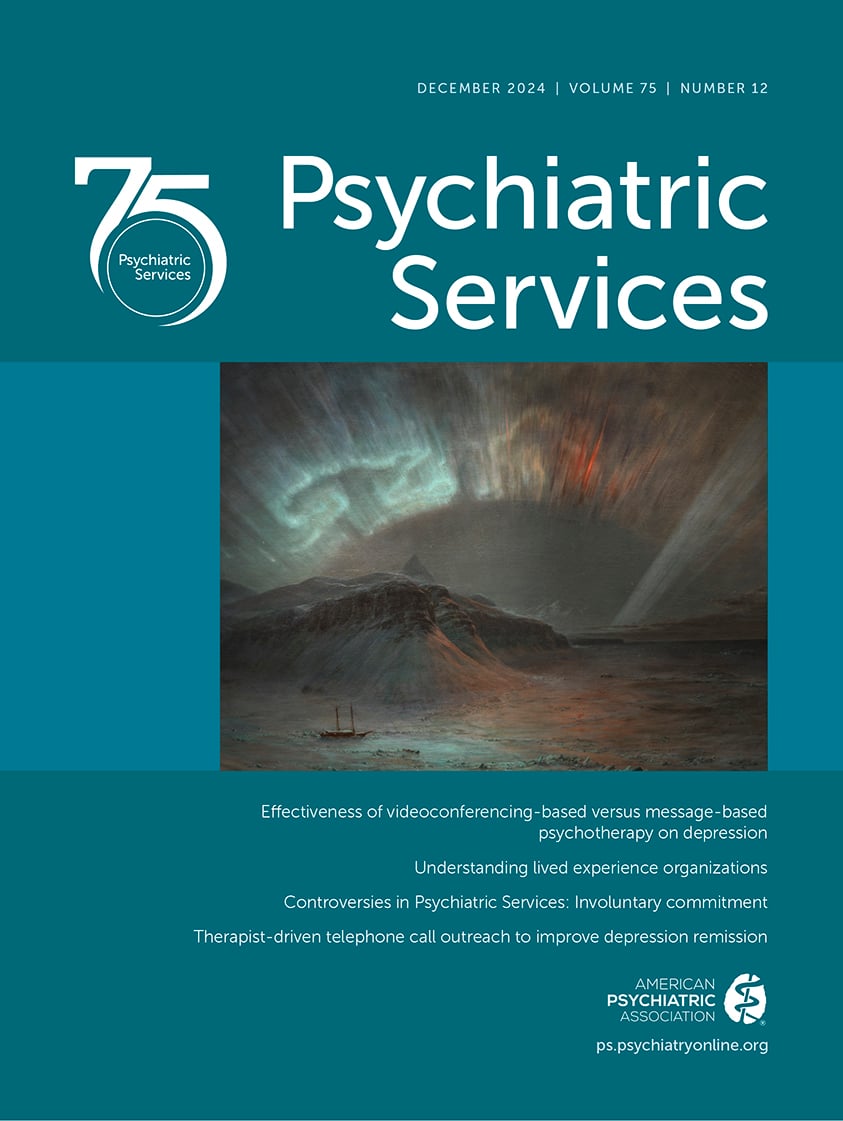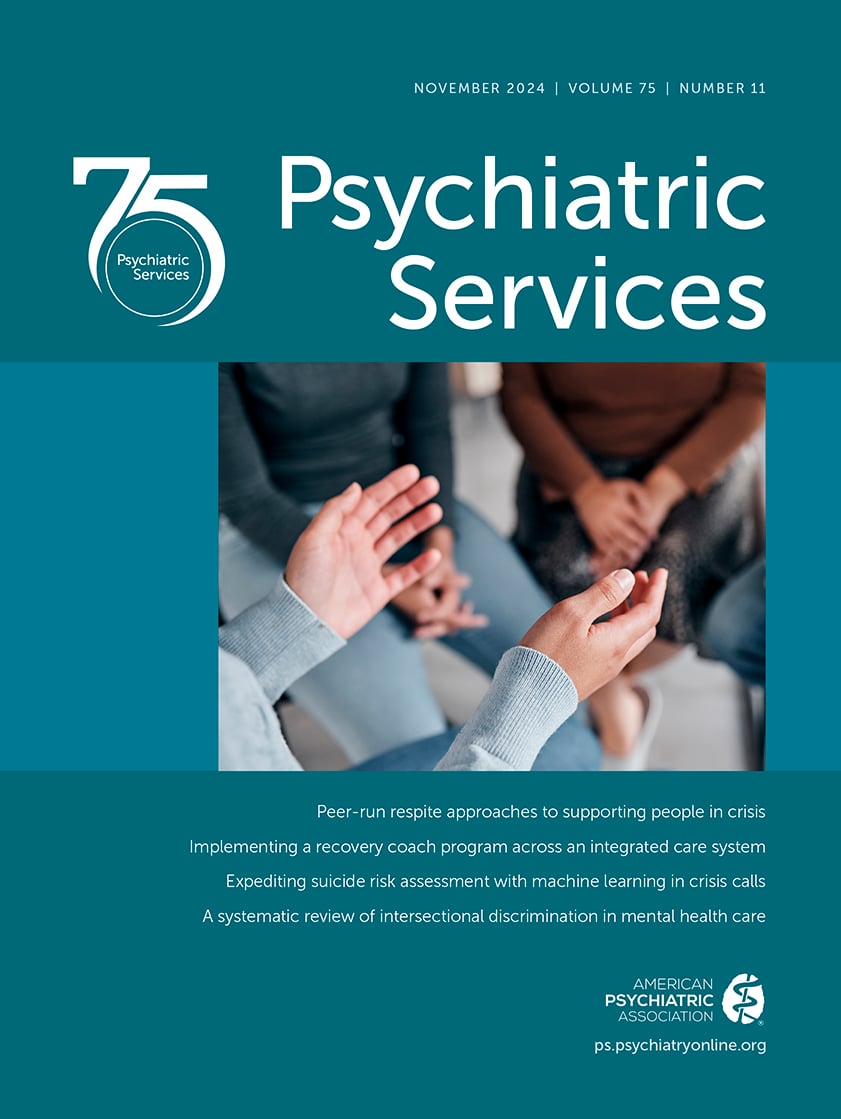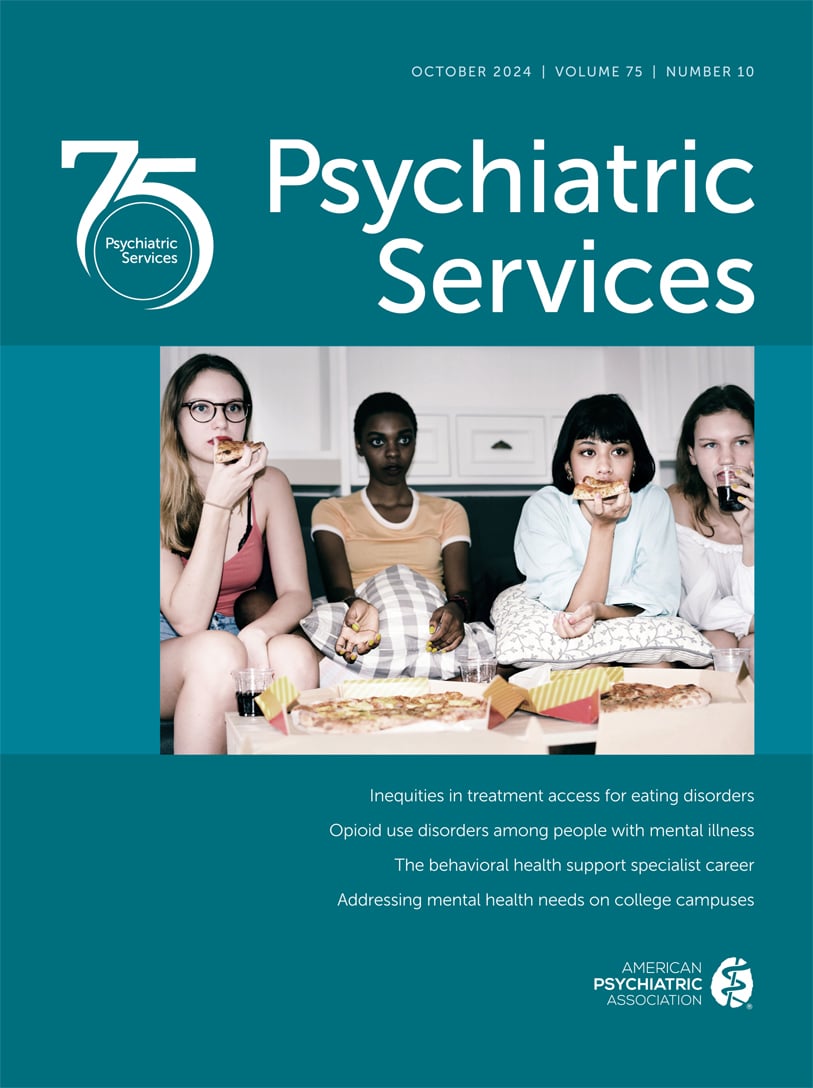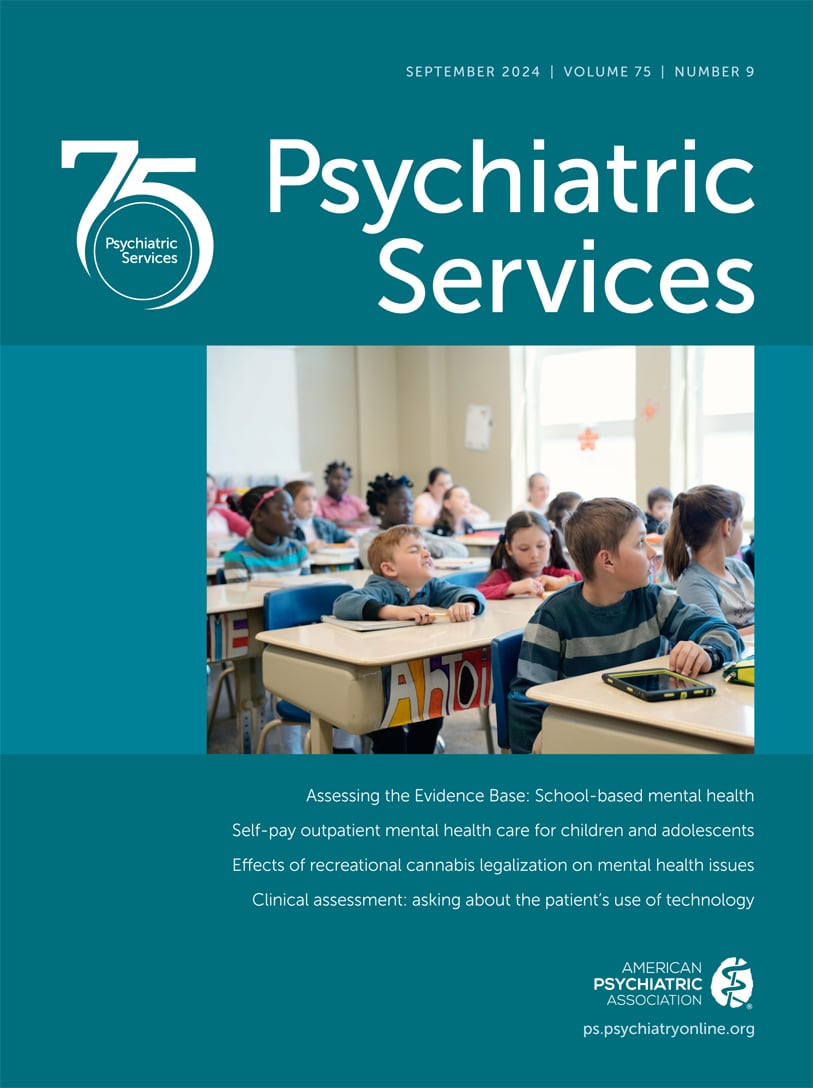Psychiatric Services
- Volume 40
- Number 3
- March 1989
Article
Publication date: 01 March 1989
Pages237–242This month's guest experts are leading authorities on the use of electroconvulsive therapy and have made many important contributions to clarifying its indications and the optimal methods of administration. Dr. Weiner is associate professor of psychiatry ...
https://doi.org/10.1176/ps.40.3.237Publication date: 01 March 1989
Pages240–242Dr. Eth's Introduction: Psychiatrists are increasingly being called on to serve as agents of social control and to petform functions that extend beyond direct treatment, such as exercising police power in civil commitment. These functions often genenste ...
https://doi.org/10.1176/ps.40.3.240Publication date: 01 March 1989
Pages245–249Psycbiatric patients who have experienced violence or victimization usually do not report these traumatic events to clinicians spontaneously, although they may be relevant to the patients' current problems. Therefore, inquiry about such experiences should ...
https://doi.org/10.1176/ps.40.3.245Publication date: 01 March 1989
Pages250–260A review of trends in emergency psychiatry since 1981 indicates that the scope and complexity of the field have greatly increased. Clinicians have found it useful to identify patient groups with special assessment and treatment needs, including ...
https://doi.org/10.1176/ps.40.3.250Publication date: 01 March 1989
Pages261–265Because the problem of homelessness has generated such attention and controversy, findings from studies of homeless populations are often received eagerly without appreciation of the significant biases inherent in surveys. Drawing on surveys of the ...
https://doi.org/10.1176/ps.40.3.261Publication date: 01 March 1989
Pages266–271A study at a large urban psychiatric hospital in Pennsylvania evaluated whether the state's dangerousness-oriented commitment criteria restricted bosp italization of patients whom emergency room clinicians considered highly in need of treatment but not ...
https://doi.org/10.1176/ps.40.3.266Publication date: 01 March 1989
Pages271–276The practice of pastoral counselors is not well understood by secular mental health professionals, although evidence suggests that advantages can be gained by increasing the interaction between the two groups. Trends in the historical development of ...
https://doi.org/10.1176/ps.40.3.271Publication date: 01 March 1989
Pages277–279DSM-III tightened the criteria for diagnosis of schizophrenia by excluding patients who exhibit a full affective syndrome before the onset of psychotic symptoms; such patients are to receive a diagosis of affective disorder. The impact of this change on ...
https://doi.org/10.1176/ps.40.3.277Publication date: 01 March 1989
Pages280–285Use of seclusion and restraint on three inpatient adolescent psychiatric units was examined during two five-month periods before and after implementation of a "therapeutic management" protocol. Under the protocol, staff classified disruptive behaviors ...
https://doi.org/10.1176/ps.40.3.280Publication date: 01 March 1989
Pages286–294Nationally black patients are overrepresented in public psychiatric institutions and are more likely than white patients to be committed involuntarily. This study of patients from 12 treatment units in the Chicago area, where these patterns were also true,...
https://doi.org/10.1176/ps.40.3.286Publication date: 01 March 1989
Pages295–297All of the patients with PTSD brought on by motor vehicle accidents who were involved in prolonged treatment with the author returned to driving, although not with the same level of calmness and efficiency they had expenienced before their accident. With ...
https://doi.org/10.1176/ps.40.3.295Publication date: 01 March 1989
Pages297–299Like many other studies, our study found that drug users cannot be differentiated from nonusems on the basis of age, sex, or diagnosis. Another more interesting finding is that the drug-related diagnosis is often missed. About 75 percent of the patients ...
https://doi.org/10.1176/ps.40.3.297Publication date: 01 March 1989
Pages299–301While authoritarian control breeds resentment and rebellion, it is not appropriate to abandon reasonable standards of patient behavior simply to prevent an AMA discharge. Our findings strongly suggest that patients who leave AMA will return with similar ...
https://doi.org/10.1176/ps.40.3.299Past Issues
View Issues Archive
Vol. 75 | No. 12

Vol. 75 | No. 11

Vol. 75 | No. 10
